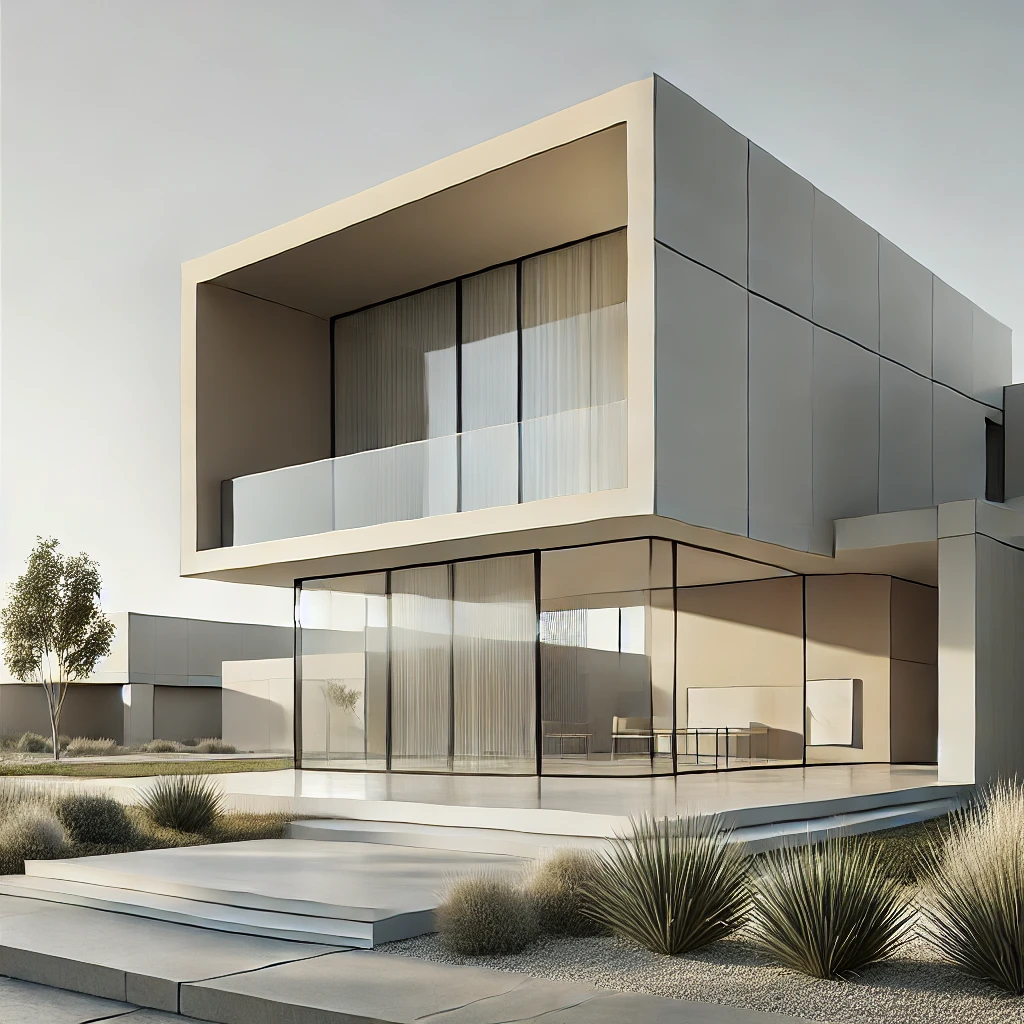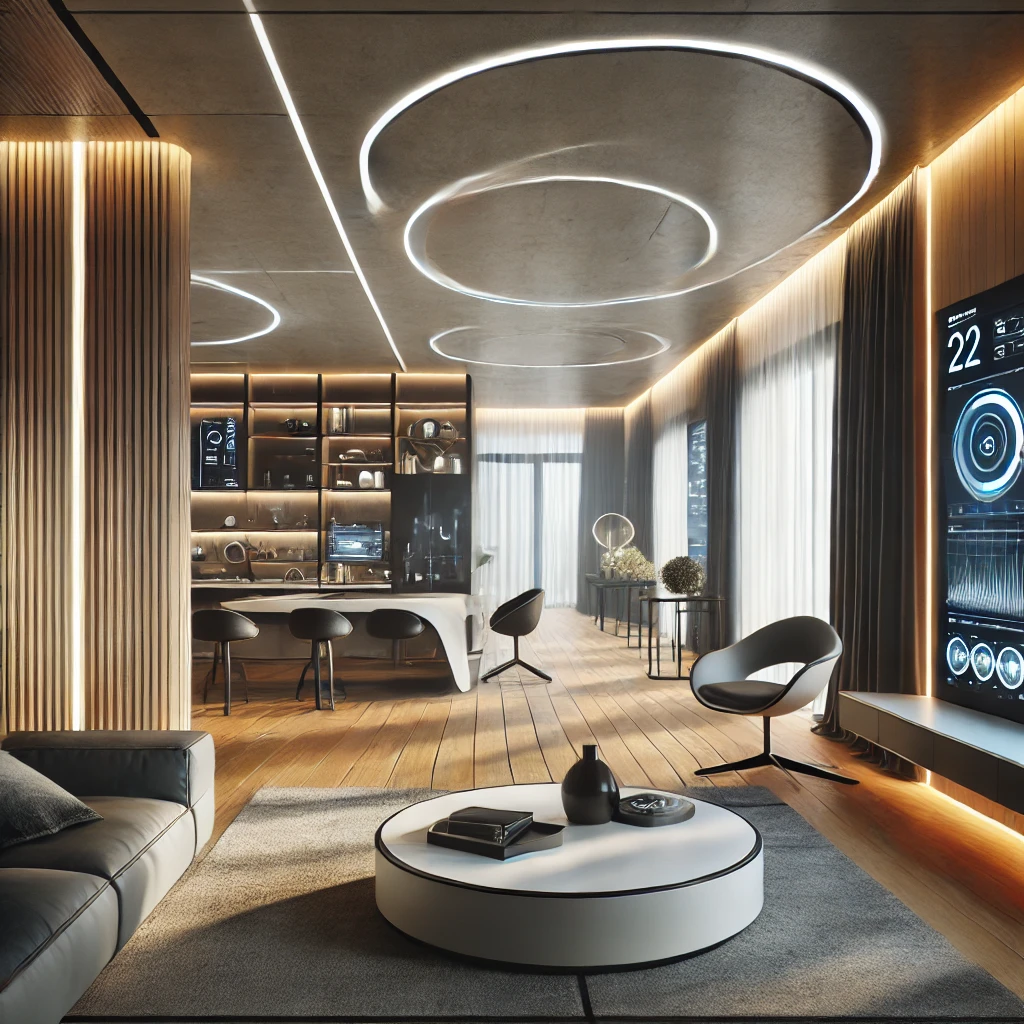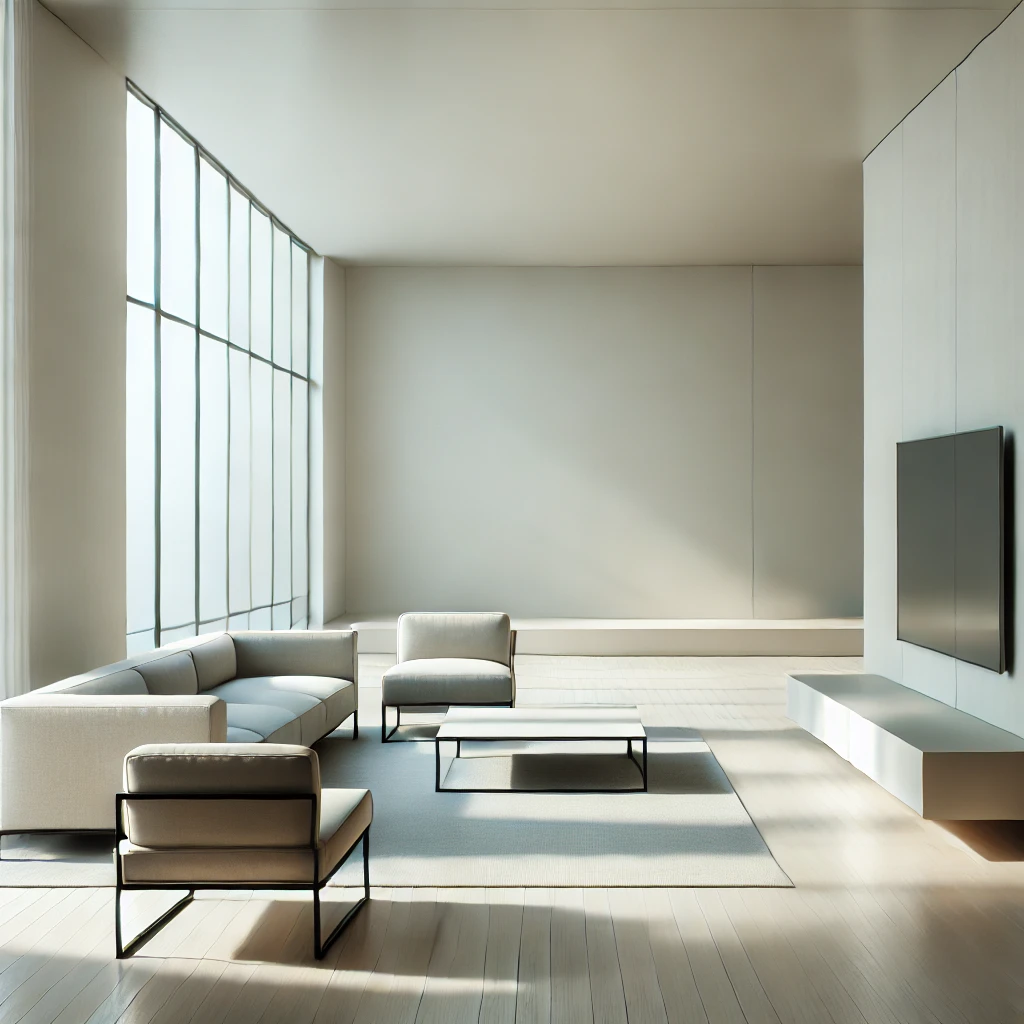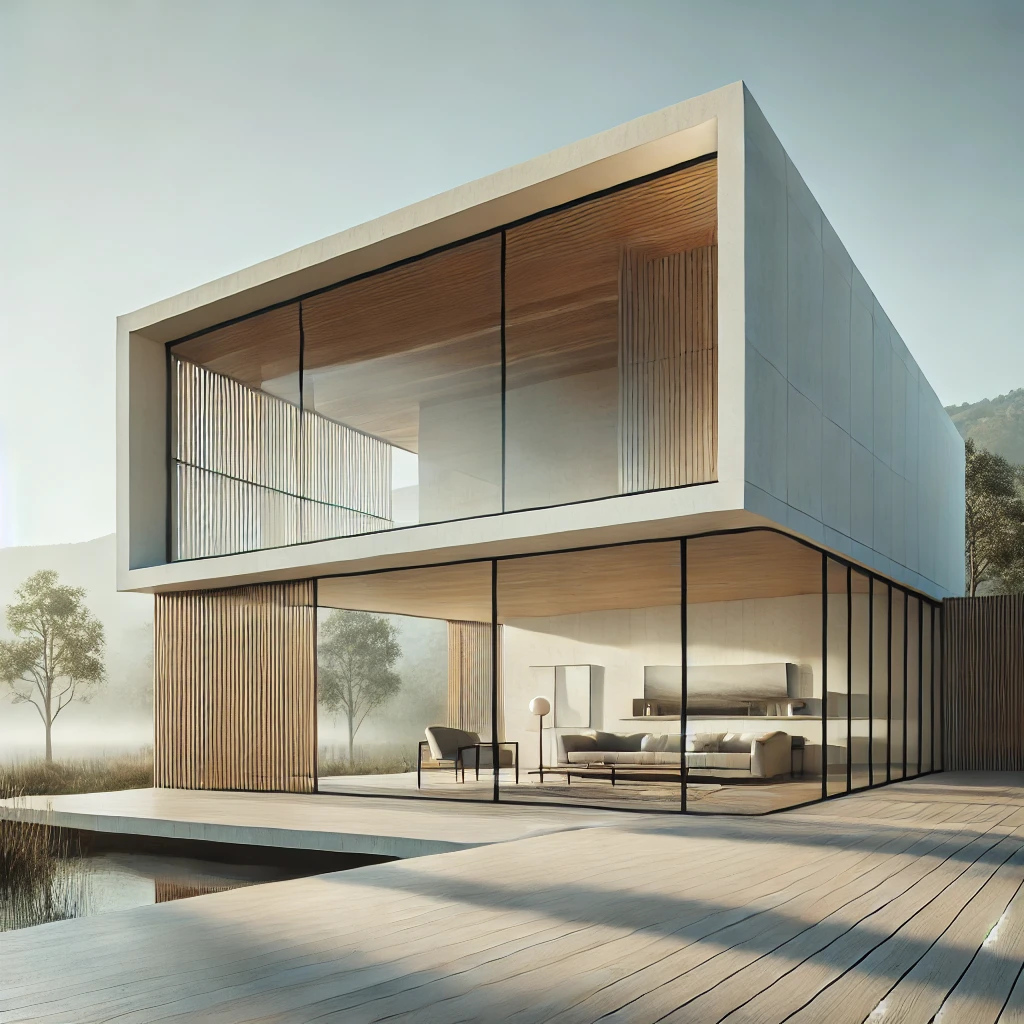Imagine stepping into a room where every element whispers calm, every surface tells a story of simplicity, and the absence of clutter creates space for creativity. As an architect and design consultant, I’ve witnessed firsthand how embracing minimalism can transform not only a building but also the lives of those who inhabit it. It’s like clearing the fog from a window—suddenly, everything becomes clearer, sharper, and infinitely more inviting.
In today’s fast-paced world, young professionals often find themselves juggling dynamic careers and personal growth. Minimalist architecture offers a refreshing counterbalance by emphasizing clarity, functionality, and beauty through simplicity. Whether you’re a tech-savvy urban dweller or someone just beginning to carve out a personal haven, minimalism speaks to our desire for efficiency and mindfulness in every aspect of life.
Understanding Minimalism in Architecture
Minimalism in architecture is much like editing a great novel—removing the extraneous to reveal the true essence of the story. At its core, minimalist design is about honing in on what matters: clean lines, open spaces, and purposeful arrangements that invite both functionality and calm.
Defining Minimalism
Imagine a canvas with just a few bold brushstrokes. Each line and form is intentional, conveying meaning without unnecessary embellishment. This is the heart of minimalist architecture. By reducing a space to its fundamental components, designers create environments that exude serenity and order.
A Brief Journey Through History
I still remember my early days as a designer, inspired by the works of pioneers like Mies van der Rohe. His mantra, “less is more,” continues to influence modern design. His buildings, like poems written in steel and glass, taught me that every element in a space should earn its place—much like a well-chosen word in a compelling narrative.
Core Principles
- Simplicity: Every structure speaks with one clear, unambiguous voice.
- Functionality: A space isn’t merely for visual appeal—it’s designed for everyday living.
- Open Space: Like the pauses in music that create rhythm, open areas in architecture invite movement, thought, and inspiration.
Relatable Reflections
Think of your workspace or home as a living narrative. Imagine how removing the unnecessary can allow your personality and passions to shine through. Many of us have felt overwhelmed by clutter—both physical and digital. Minimalist architecture offers a solution akin to curating the perfect playlist, where every note has its purpose and every pause has meaning.
Real-World Inspiration
Consider the transformation of an old warehouse into a modern, airy loft. By peeling back layers of outdated design, architects have created spaces where natural light dances across simple, elegant furnishings. Such designs remind us that true beauty often lies in restraint—a lesson that resonates with anyone seeking balance in a chaotic world.
For more inspiration and in-depth case studies on minimalist design, check out ArchDaily’s collection on minimalism.

Benefits of Minimalist Design
The advantages of minimalist design extend far beyond a visually pleasing aesthetic—they transform the way we experience everyday spaces.
Enhanced Aesthetics and Functionality
Much like a perfectly composed photograph, a minimalist space uses simple, intentional elements to create harmony. I once worked on a project where a client, overwhelmed by a chaotic living room, embraced minimalism. Once unnecessary items were cleared away, the room transformed into a serene sanctuary that not only looked stunning but also enhanced daily efficiency.
Reduced Stress and Improved Well-Being
Minimalist design is often compared to taking a deep, cleansing breath. Each open space offers a moment of respite from the busy rhythm of modern life. In my practice, I’ve seen how clients report a noticeable decrease in stress after moving into a simplified, uncluttered environment. The order and calm of such spaces foster clearer thinking and a more focused mind.
Environmental and Economic Advantages
Adopting minimalist principles also positively impacts the environment and your wallet. Efficient designs use resources more judiciously, leading to a smaller ecological footprint. Investing in timeless, high-quality pieces means fewer replacements and less waste over time—much like choosing a well-crafted tool that lasts a lifetime instead of a disposable one.
Relatable Reflections and Examples
Consider minimalism as the art of letting go—similar to editing your favorite song to remove background noise and let the melody shine. Many young professionals, balancing multiple roles, have discovered that a simplified environment enhances concentration and creativity. Picture a start-up office that, instead of being overwhelmed with furniture and gadgets, features streamlined designs that promote both collaboration and innovation.
Modern Trends in Minimalist Architecture
Today, minimalist architecture evolves by embracing modern technology and innovative materials, transforming spaces into sophisticated yet efficient environments.
Integrating Technology with Minimalist Design
Imagine a home that intuitively adjusts its lighting, temperature, and ambiance with a subtle interface. Modern minimalist design leverages smart technology to create spaces that are both functional and beautiful. In a recent project, we integrated automated systems that responded to natural light levels, ensuring every room maintained a perfect balance of brightness and shadow. This seamless blend of tech and design simplifies daily routines while adding sophistication—a feature that appeals strongly to young professionals.

Innovative Materials and Sustainable Choices
Just as a chef selects only the freshest ingredients, architects today are turning to innovative materials that complement minimalist aesthetics and support environmental sustainability. From recycled concrete to sustainably sourced wood and advanced composites, these materials offer durability without sacrificing style. Imagine a sleek modern office where every element—from the flooring to the fixtures—reflects a commitment to quality and sustainability.
Open and Flexible Spaces
A hallmark of modern minimalist design is the emphasis on open, flexible layouts that adapt to changing needs. Picture a living space that effortlessly transitions from a quiet retreat to a vibrant area for social gatherings. This adaptability mirrors the evolving lifestyles of young professionals, who often require spaces that serve multiple purposes. For instance, a co-working space with movable partitions can foster both collaboration and focused work, embodying minimalism’s practical yet inspiring spirit.
Real-World Inspirations
Envision a contemporary loft with glass walls and clean lines that invite the outdoors in. The interplay of natural elements with modern design creates a harmonious space that is both calming and invigorating. Many architects draw inspiration from nature, using organic shapes and natural light to amplify the minimalist ethos. This trend—blending technology with sustainability and adaptability—has become a cornerstone of innovative projects, capturing the imagination of anyone eager to explore the future of design.
Challenges and Criticisms of Minimalist Architecture
While minimalist design is celebrated for its clarity and elegance, it also faces valid criticisms and challenges that merit discussion.
Balancing Simplicity with Warmth
Minimalist spaces can sometimes feel impersonal or cold if not executed with care. The challenge is to maintain a clean aesthetic while incorporating elements that bring comfort and character. Think of it as a delicate dance between restraint and personal expression—where every piece, though few, carries significant meaning.
Personalization without Clutter
A common concern is that minimalism might erase individuality. However, the key lies in selecting decor or art that reflects personal taste without overwhelming the space. Designers are challenged to be deliberate with their choices, ensuring every element resonates with the owner’s identity.
Critiques and Practical Solutions
Critics sometimes argue that minimalist design can appear too rigid or less accommodating to diverse needs. Yet, innovative approaches—such as adaptive lighting, modular furniture, and strategic use of textures—can soften the starkness and add depth. These solutions bridge the gap between a sterile environment and one that feels inviting and lived-in.
Real-World Example
Consider a residential project where the initial minimalist approach felt too sparse. By introducing a few carefully chosen vintage pieces and textiles, the space gained warmth without sacrificing its inherent simplicity. This successful compromise reflects both design discipline and personal storytelling.

How to Incorporate Minimalism in Your Space
Transitioning to a minimalist lifestyle doesn’t require a complete overhaul. Instead, thoughtful, gradual changes can create a significant impact.
Step-by-Step Decluttering
Begin by evaluating your space and identifying items that no longer serve a purpose. It’s like editing a story—removing the superfluous to reveal the narrative that truly matters. Start with one room at a time, embracing the philosophy that less is more.
Choosing Functional Furniture and Decor
Select pieces that combine aesthetic appeal with functionality. Look for furniture that offers storage, clean lines, and a neutral palette. The goal is to create a cohesive environment where every item contributes to a harmonious whole.
Utilizing Light and Open Space
Embrace natural light and open floor plans to enhance the sense of space. Using mirrors or light-colored surfaces to reflect light can create the illusion of a larger area. This approach not only reinforces minimalism but also promotes a refreshing, airy atmosphere.
Real-World Example
Consider a coworking space revamped with minimalist principles. By replacing bulky desks with streamlined workstations and introducing flexible, modular seating, the area became both aesthetically pleasing and adaptable to various work modes and team collaborations.
Interactive Reflection
- What is one item in your space that you can remove or replace to create more clarity?
- How would you balance functionality with your personal style in a minimalist setup?
Visuals and Media
Visual elements can significantly enhance the impact of minimalist design:
- Before & After Photo Galleries: Use interactive sliders to showcase transformations from cluttered to minimalist spaces.
- Infographics and Diagrams: Create visuals that break down the core principles of minimalism—simplicity, functionality, and open space.
- Video Walkthroughs: Produce short clips or virtual tours of minimalist spaces that highlight key design elements and the interplay of light and space.
For presentation, ensure that all images and videos maintain a consistent, clean style with ample white space. Captions and annotations can further explain design choices and their benefits in simple terms.
Conclusion
Minimalist architecture is more than just a trend—it’s a thoughtful approach to creating spaces that inspire clarity, creativity, and well-being. By understanding its principles, embracing its benefits, and addressing its challenges, you can transform your living and working environments into havens of simplicity and functionality. Whether you’re a young professional or a seasoned creative, adopting minimalist design may be the key to unlocking a more balanced, inspired life.
For more real-life examples and the latest trends in minimalist architecture, explore Dezeen’s dedicated section on minimalism.
Reflect on these ideas and consider how an intentional space could transform your daily routine. Could embracing minimalism be the catalyst for a more focused and fulfilling lifestyle?
Audience Engagement
To keep this conversation going, consider these interactive elements:
- Polls and Surveys: Share your experiences with clutter and simplicity. What change would make the biggest impact in your own space?
- Comment Sections: We invite you to share personal stories or photos of your minimalist transformations.
- Design Challenges: Participate in a contest for the best minimalist makeover or join our social media campaign by sharing your own design journey.
Additional Thoughts
Maintaining a friendly, knowledgeable tone is key to making complex concepts accessible. Blending personal anecdotes with professional insights not only creates an engaging narrative but also offers valuable, actionable advice. Use vivid language and storytelling techniques to draw parallels between design and everyday life. And remember, whether through affiliate links to design apps or recommendations for sustainable products, always ensure that the content adds genuine value for our readers.
Thank you for joining me on this journey into minimalist architecture. I hope these insights inspire you to reimagine your space and discover the beauty in simplicity. Feel free to share your thoughts and experiences, and let’s continue exploring how less can truly be more.





